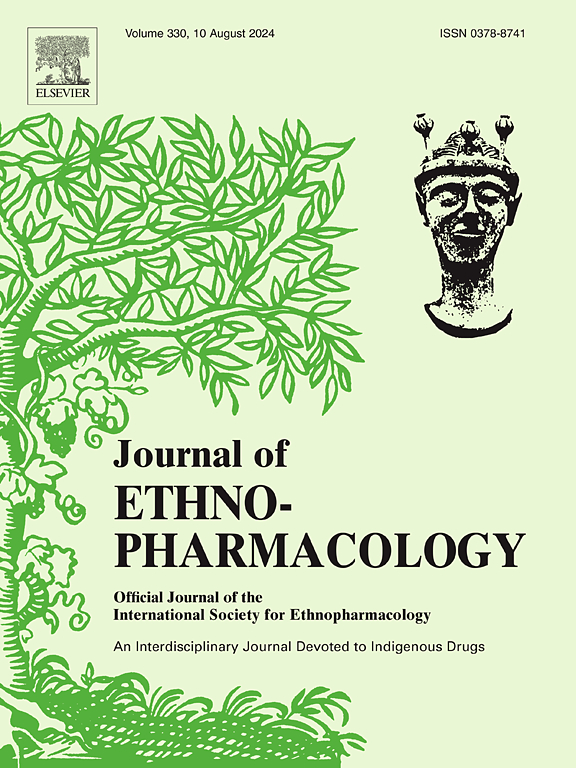10-Methoxy-leonurine accelerated wound healing through ErbB4/PI3K-AKT pathway
IF 4.8
2区 医学
Q1 CHEMISTRY, MEDICINAL
引用次数: 0
Abstract
Ethnopharmacological relevance
Leonurus japonicus Houtt., commonly known as motherwort, has been used in traditional Chinese medicine to treat trauma and wound infections historically. However, the main compounds responsible for promoting wound healing need to be identified and explained fully.
Aim of the study
To investigate the wound healing effect of 10-methoxy-leonurine (MN) and explore its mechanism.
Materials and methods
Following the UHPLC/Q-TOF-MS analysis of L. japonicus, the phytochemical isolation was carried out, and then the effect of isolated compounds in promoting the proliferation of human skin fibroblasts (HSF) was screened. Additionally, scratch and 5-ethynyl-2′-deoxyuridine assay in HSF were further adopted to support the effects of MN in vitro. A rat model with full-thickness skin wounds was used to verify in vivo by hematoxylin and eosin staining, Masson's trichrome and immunohistochemistry. Furthermore, network pharmacology and molecular docking were performed to predict the potential pathway, which were subsequently validated by cell cycle and RT-qPCR.
Results
A total 11 compounds were isolated, in which MN exhibited the most significant bioactivity in promoting HSF proliferation and migration. Moreover, the wound healing rates in low (10 μg/mL) and high dose (50 μg/mL) of MN groups reached 93.9 % and 94.5 %, respectively, which was better than basic fibroblast growth factor (bFGF) 89.4 %. Additionally, the epithelial thickness, collagen Ⅰ deposition and α-smooth muscle actin expression were enhanced and the proportion of HSF cells in the S phase of the cell cycle was increased. Network pharmacological and molecular docking analysis suggested ErbB pathway was involved in the regulation of wound healing by MN, which was further supported by the up-regulation of Erbb4, Stat5, Pi3k, Akt and mTOR mRNA levels.
Conclusion
MN showed potent effect on wound healing by regulating ErbB4/PI3K-AKT pathway, even better than bFGF.

10-甲氧基亮氨酸通过 ErbB4/PI3K-AKT 通路加速伤口愈合
本文章由计算机程序翻译,如有差异,请以英文原文为准。
求助全文
约1分钟内获得全文
求助全文
来源期刊

Journal of ethnopharmacology
医学-全科医学与补充医学
CiteScore
10.30
自引率
5.60%
发文量
967
审稿时长
77 days
期刊介绍:
The Journal of Ethnopharmacology is dedicated to the exchange of information and understandings about people''s use of plants, fungi, animals, microorganisms and minerals and their biological and pharmacological effects based on the principles established through international conventions. Early people confronted with illness and disease, discovered a wealth of useful therapeutic agents in the plant and animal kingdoms. The empirical knowledge of these medicinal substances and their toxic potential was passed on by oral tradition and sometimes recorded in herbals and other texts on materia medica. Many valuable drugs of today (e.g., atropine, ephedrine, tubocurarine, digoxin, reserpine) came into use through the study of indigenous remedies. Chemists continue to use plant-derived drugs (e.g., morphine, taxol, physostigmine, quinidine, emetine) as prototypes in their attempts to develop more effective and less toxic medicinals.
 求助内容:
求助内容: 应助结果提醒方式:
应助结果提醒方式:


